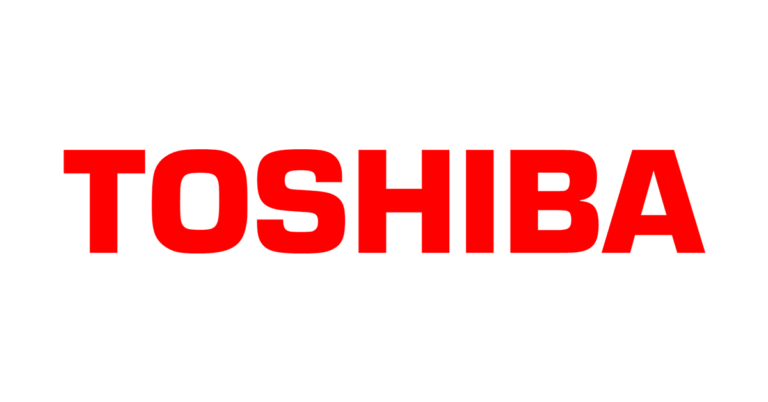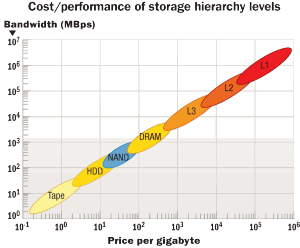Billing it as “the biggest launch in the company’s history,” NetApp today introduced new products ranging from high-end disk arrays to management software. The company’s mantra seemed to be “shared IT infrastructure.”
“IT organizations don’t want more silos; they want a shared IT infrastructure with unification of storage,” says Patrick Rogers, NetApp’s vice president of solutions and alliances.
NetApp launched six new models in its mid-range and high-end FAS and V series disk arrays, validated configurations from its partnership with Cisco and VMware, a new release of the Data ONTAP operating system, a unified management platform, SAS-based disk shelves and support for solid-state disk (SSD) drives.
FAS/V Additions
At the high end of its product line, NetApp introduced the FAS6200 series, including the FAS6210 (up to 2.4PB, 1,200 drives, 3TB of Flash Cache), FAS6240 (2.9PB, 1,440 drives, 6TB of Flash Cache) and FAS6280 (2.9PB, 1,440 drives, 8TB of Flash Cache). The company claims 2X the performance over previous generation systems via technologies such as multi-core processors, higher-capacity flash memory and multi-threading in the new release of the Data ONTAP software. (Flash Cache is NetApp’s NAND-based controller read cache.)
External connections for the FAS6200 series include 10GbE, 8Gbps Fibre Channel and 6Gbps SAS.
Other features of the FAS6200 lineup include a maximum of 192GB of memory, 24 PCIe expansion slots, and 32 Fibre Channel connections, eight 10GbE connections, or 24 SAS connections.
In its mid-range lineup, NetApp introduced the FAS3210 (up to 480TB, 240 drives, 512GB of Flash Cache), FAS3240 (1.2PB, 600 drives, 1TB of Flash Cache) and FAS3270 (1.9PB, 960 drives, 2TB of Flash Cache). The new FAS3200 series models have 50% more I/O slots than their corresponding predecessors.
Other features of the FAS3200 series include a maximum of 960 disk drives, 32GB of memory, 12 PCIe expansion slots and four external connections.
The FAS models are available as V-Series systems for virtualizing heterogeneous arrays.
Versus its competitors, NetApp sounded the familiar theme of a single, unified architecture and operating system across its entire disk array family.
NetApp also introduced the 2U DS2246 disk shelf, which has up to 24 2.5-inch, 6Gbps SAS drives (450GB or 600GB), and added support for SSD drives in its 24-drive DS4243 disk shelves, which also support SAS and SATA drives. The SSD drives store 100GB and use single-level cell (SLC) technology and a 6Gbps SAS interconnect.
“The addition of SSDs won’t affect customers’ use of Flash Cache, but for I/O-intensive applications with a lot of non-repeated reads users can now use SSD drives,” says Rogers.
Data ONTAP
The latest release of NetApp’s Data ONTAP operating system – 8.0.1 — includes a number of new features, including:
–Native data compression, which can be used in conjunction with NetApp’s data deduplication software.
–A Transparent Data Mobility feature that enables users to move volumes between aggregates. “We’ve had Data Motion between systems for about a year, but now we have the ability to transparently move volumes and data sets between aggregates or different drive classes,” says Rogers.
–Unified Connect technology, which supports all Ethernet-based storage protocols on a single wire, including CIFS, NFS, iSCSI, and Fibre Channel over Ethernet (FCoE) via NetApp’s unified target adapters.
–Performance enhancements in multi-threading and support for multi-core processors.
FlexPod For VMware
NetApp also introduced pre-sized, validated configurations based on its partnership with VMware and Cisco.
Commenting on the difference between the NetApp-VMware-Cisco partnership and the EMC-VMware-Cisco partnership, Rogers says that “We have granular scalability across a single architecture, as opposed to three completely different architectures, which is what you see from EMC. In addition, we have features such as secure multi-tenancy [via MultiStore technology] on top of the FlexPod modules, which EMC does not offer today. And our modules are designed for our channel partners, as opposed to a third party such as Acadia.”
The FlexPod for VMware server-network-storage configurations are based on VMware’s vSphere and vCenter software, Cisco’s UCS servers and Nexus switch platforms, and NetApp’s FAS disk arrays.
Lastly, NetApp rolled out a new management platform – the OnCommand Management Software Suite – that unifies the company’s control (System Manager, Operations Manager, My AutoSupport), automation (Provisions Manager, Protection Manager, SnapManager, SnapDrive) and analytical (SANscreen) tools under a single suite.
NetApp did not disclose pricing for the new products.




